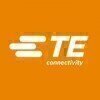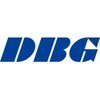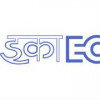


i
Navitasys
India
Work with us
![]()
Proud winner of ABECA 2025 - AmbitionBox Employee Choice Awards
Filter interviews by
Navitasys India Interview Questions and Answers
92 Interview questions
SCARA robots are versatile, high-speed robotic arms used for assembly, packaging, and material handling tasks.
SCARA stands for Selective Compliance Assembly Robot Arm.
They have a unique design allowing horizontal movement and vertical lifting.
Commonly used in manufacturing for tasks like pick-and-place operations.
Examples include assembling electronic components and packaging products.
SCARA robots are known for th...
Pneumatic systems use compressed air, while hydraulic systems use pressurized liquids for power transmission.
Pneumatic systems are generally faster and lighter than hydraulic systems.
Hydraulic systems can generate higher force and are used in heavy machinery, like excavators.
Pneumatic systems are often used in applications like air brakes in buses and trucks.
Hydraulic systems are commonly found in automotive brake...
SMT, or Surface Mount Technology, is a method for producing electronic circuits by mounting components directly onto the surface of PCBs.
Components are soldered onto the surface of printed circuit boards (PCBs).
SMT allows for higher density of components compared to traditional through-hole technology.
Common SMT components include resistors, capacitors, and integrated circuits.
SMT is widely used in consumer electr...
Safety refers to the condition of being protected from harm, danger, or injury in various environments and situations.
Safety involves implementing measures to prevent accidents, such as wearing seatbelts in cars.
In workplaces, safety protocols like fire drills ensure preparedness for emergencies.
Personal safety includes being aware of surroundings to avoid potential threats, like walking in well-lit areas at night...
During an audit, I will ensure compliance, gather data, and analyze processes to identify areas for improvement.
Review financial records for accuracy and completeness.
Conduct interviews with staff to understand processes, e.g., asking about inventory management.
Analyze compliance with regulations, such as checking adherence to safety standards.
Identify discrepancies and recommend corrective actions, like improving...
The 7 QC tools are essential techniques used in quality management to identify and solve problems effectively.
1. Cause-and-Effect Diagram: Helps identify root causes of a problem (e.g., fishbone diagram).
2. Check Sheet: A structured form for collecting and analyzing data (e.g., defect tracking).
3. Control Chart: Monitors process stability over time (e.g., tracking production defects).
4. Histogram: Displays frequen...
I manage manpower by assessing needs, fostering teamwork, and ensuring effective communication to achieve organizational goals.
Assess manpower needs: Regularly evaluate the workload and determine staffing requirements to ensure optimal performance.
Foster teamwork: Encourage collaboration among team members to enhance productivity and create a supportive work environment.
Effective communication: Maintain open lines...
IQA (Internal Quality Assurance) focuses on maintaining quality within processes, while IQC (Incoming Quality Control) ensures incoming materials meet standards.
IQA involves systematic monitoring of processes to ensure quality standards are met.
Example of IQA: Regular audits of production processes to identify areas for improvement.
IQC is concerned with inspecting raw materials or components before they enter the ...
Quality is the measure of excellence or superiority of a product or service.
Quality is meeting or exceeding customer expectations
It involves consistency, reliability, and durability
Quality is achieved through continuous improvement and adherence to standards
Examples include defect-free products, high customer satisfaction, and meeting specifications
Control plan is a detailed document that outlines the critical steps and parameters for ensuring quality in a manufacturing process.
Control plan is a key component of the overall quality management system.
It includes details on process steps, key process parameters, monitoring methods, and response plans.
Control plans help ensure consistency and quality in production.
Examples of items included in a control plan ar...
Navitasys India Interview Experiences
109 interviews found
I appeared for an interview in Jan 2025.
(8 Questions)
- Q1. What is quality
- Ans.
Quality is the measure of excellence or superiority of a product or service.
Quality is meeting or exceeding customer expectations
It involves consistency, reliability, and durability
Quality is achieved through continuous improvement and adherence to standards
Examples include defect-free products, high customer satisfaction, and meeting specifications
- Q2. Let's explain the 6S
- Ans.
6S is a methodology used to organize a workplace for efficiency and effectiveness.
Sort: Remove unnecessary items from the workplace
Set in order: Organize remaining items in a logical manner
Shine: Clean and inspect the workplace regularly
Standardize: Establish standards and procedures for maintaining the workplace
Sustain: Ensure the 6S system is consistently followed
Safety: Ensure workplace safety measures are in place
- Q3. Let's explain the 7 QC tools
- Ans.
The 7 QC tools are a set of techniques used for quality control and problem-solving in manufacturing and other industries.
Check sheets: Used to collect and organize data, such as tallying defects on a production line.
Histograms: Visual representation of data distribution, helpful for identifying patterns and trends.
Pareto charts: Shows the most significant factors contributing to a problem, helping prioritize improveme...
- Q4. Least count of Varnier caliper,micrometer,Hight gauge
- Ans.
The least count of Vernier caliper is 0.02 mm, micrometer is 0.01 mm, and height gauge is 0.02 mm.
Vernier caliper least count: 0.02 mm
Micrometer least count: 0.01 mm
Height gauge least count: 0.02 mm
- Q5. Let's explain the Why -Why Analysis
- Ans.
Why-Why Analysis is a problem-solving technique that involves asking 'why' multiple times to get to the root cause of a problem.
Identify the problem or issue that needs to be addressed
Ask 'why' multiple times to uncover the underlying causes of the problem
Continue asking 'why' until the root cause is identified
Use the 5 Whys technique to systematically dig deeper into the issue
Develop solutions based on the root cause ...
- Q6. Let's explain the 5W 1H Analysis
- Ans.
5W 1H Analysis is a method used to gather information by asking Who, What, Where, When, Why, and How questions.
Who - Identify the person or group involved
What - Determine the event or action being analyzed
Where - Pinpoint the location or context of the event
When - Establish the time frame or sequence of events
Why - Understand the reasons or motivations behind the event
How - Explore the methods or processes used in the ...
- Q7. Let's Explain the about Audit
- Ans.
Audit is a systematic and independent examination of processes, systems, and records to ensure compliance with standards and regulations.
Audits are conducted to identify areas of improvement and ensure compliance with regulations and standards.
There are different types of audits such as internal audits, external audits, financial audits, and quality audits.
Auditors review processes, systems, and records to identify non...
- Q8. Let's explain the control plan
- Ans.
Control plan is a detailed document that outlines the critical steps and parameters for ensuring quality in a manufacturing process.
Control plan is a key component of the overall quality management system.
It includes details on process steps, key process parameters, monitoring methods, and response plans.
Control plans help ensure consistency and quality in production.
Examples of items included in a control plan are pro...
(3 Questions)
- Q1. Let's about your self
- Q2. How many work experienced
- Ans.
I have 5 years of work experience as a Quality Engineer.
I have worked in the manufacturing industry for 3 years, focusing on quality control processes.
I have 2 years of experience in the automotive industry, implementing quality improvement initiatives.
I have led cross-functional teams to address quality issues and drive continuous improvement.
- Q3. Why you leave the old company
- Ans.
Seeking new challenges and growth opportunities in a different work environment.
Desire for career advancement
Looking for new challenges
Seeking better work-life balance
Relocation to a different city
Company downsizing or restructuring
I applied via Naukri.com and was interviewed in Dec 2024. There were 2 interview rounds.
(2 Questions)
- Q1. Basic questions
- Q2. Manpower handling
(3 Questions)
- Q1. Previous company produces
- Q2. Here manpower handling as well as well parmanent employee
- Q3. Basic questions and salary related questions
Interview Preparation Tips
(2 Questions)
- Q1. What can you tell me about types of transformers?
- Ans.
Transformers are devices that transfer electrical energy between two or more circuits through electromagnetic induction.
Transformers can be classified based on their construction (core type, shell type), cooling method (oil-immersed, dry-type), and application (power, distribution, instrument, etc.)
Examples of transformers include power transformers used in power distribution networks, distribution transformers used in...
- Q2. What are the different types of motors?
- Ans.
Different types of motors include DC motors, AC motors, stepper motors, and servo motors.
DC motors: Direct current motors that convert electrical energy into mechanical energy.
AC motors: Alternating current motors that use alternating current to produce rotational motion.
Stepper motors: Motors that move in discrete steps, commonly used in robotics and automation.
Servo motors: Motors that use feedback to control the pos...
(2 Questions)
- Q1. Can you tell me about yourself?
- Ans.
I am a dedicated and experienced Project Engineer with a strong background in managing engineering projects from conception to completion.
Bachelor's degree in Engineering
5+ years of experience in project management
Proficient in project planning and scheduling software
Strong communication and leadership skills
Managed a team of engineers to successfully complete a major infrastructure project
- Q2. What can you tell me about Dynamo?
- Ans.
Dynamo is a visual programming tool that is used in building information modeling (BIM) software like Autodesk Revit.
Dynamo allows users to create logic and automation for design tasks in BIM software.
It uses a node-based interface where users can connect different nodes to create workflows.
Dynamo is commonly used for parametric design, data management, and computational design in architecture and engineering.
It can be...
Interview Preparation Tips
(3 Questions)
- Q1. About Electronic Components working principle.
- Q2. Tell me about 4th year project details
- Ans.
Developed a quality control system for a manufacturing company to improve product consistency and reduce defects.
Researched industry standards and best practices for quality control
Designed and implemented a data collection system to track product quality metrics
Collaborated with cross-functional teams to analyze data and identify areas for improvement
Implemented statistical process control techniques to monitor and im...
- Q3. What is a difference between semiconductor/conductor
- Ans.
Semiconductors have conductivity between conductors and insulators, allowing for control of electrical flow.
Semiconductors have conductivity between conductors and insulators
Conductors have high conductivity and allow electricity to flow easily
Examples of semiconductors include silicon and germanium
Examples of conductors include metals like copper and aluminum
(2 Questions)
- Q1. Tell me about your self
- Ans.
I am a dedicated Quality Engineer with a strong background in ensuring product quality and compliance with industry standards.
Experienced in conducting quality audits and inspections
Skilled in root cause analysis and implementing corrective actions
Proficient in using quality tools such as FMEA, Control Charts, and Pareto Analysis
- Q2. What is your goal after 5 years
- Ans.
My goal after 5 years is to become a senior Quality Engineer, leading a team and implementing innovative quality improvement strategies.
Advance to a senior Quality Engineer role
Lead a team of quality professionals
Implement innovative quality improvement strategies
Continuously improve my skills and knowledge through training and certifications
I applied via Approached by Company and was interviewed in Dec 2024. There were 2 interview rounds.
(2 Questions)
- Q1. Tell me about yourself
- Ans.
I am a dedicated SMT Engineer with 5 years of experience in PCB assembly and troubleshooting.
Experienced in surface mount technology (SMT) processes
Skilled in operating SMT equipment such as pick-and-place machines and reflow ovens
Proficient in reading and interpreting PCB schematics and assembly drawings
Strong problem-solving skills in identifying and resolving soldering defects
Familiar with IPC standards for PCB asse...
- Q2. Why do you want to change the job
- Ans.
Seeking new challenges and growth opportunities in a dynamic work environment.
Looking for career advancement
Interested in learning new technologies and processes
Seeking a more collaborative team environment
Want to work for a company with better work-life balance
(2 Questions)
- Q1. Why do you want to join Navitasys India
- Ans.
I want to join Navitasys India because of their reputation for innovation and growth opportunities in the field of SMT engineering.
Navitasys India has a strong reputation for innovation in the SMT engineering industry.
I am impressed by the growth opportunities and career development prospects at Navitasys India.
I believe that working at Navitasys India will allow me to further develop my skills and contribute to cuttin...
- Q2. Salary expectations
Interview Preparation Tips
(2 Questions)
- Q1. What is pwi of reflow profile
- Ans.
PWI stands for Process Window Index in a reflow profile, indicating the process window's capability to produce acceptable solder joints.
PWI is a metric used to evaluate the quality of a reflow profile in soldering processes.
It is calculated by comparing the peak temperature, time above liquidus, and cooling rate of the reflow profile to the specified limits.
A higher PWI value indicates a wider process window and better...
- Q2. How to control smt defect
- Ans.
To control SMT defects, implement proper quality control measures, train staff on best practices, maintain equipment regularly, and analyze root causes of defects.
Implement proper quality control measures to catch defects early on
Train staff on best practices for handling components and operating machinery
Regularly maintain and calibrate equipment to ensure accurate placement of components
Analyze root causes of defects...
(2 Questions)
- Q1. How to make analysis report
- Ans.
To make an analysis report, gather data, identify key metrics, analyze data, create visualizations, and draw conclusions.
Gather relevant data from various sources
Identify key metrics to focus on
Analyze the data using statistical methods
Create visualizations such as charts or graphs to present the findings
Draw conclusions and make recommendations based on the analysis
- Q2. What is 5W1H
- Ans.
5W1H is a method used for gathering information by asking Who, What, When, Where, Why, and How.
Who - refers to the person or group involved
What - refers to the action or event
When - refers to the time or date
Where - refers to the location
Why - refers to the reason or purpose
How - refers to the method or process
I applied via Naukri.com and was interviewed in Nov 2024. There were 2 interview rounds.
(1 Question)
- Q1. 7QC tool Kaizen Customer complaint handing 5A report Cp &CPk study Fixtures management FPMEA ISO standard IPC610G
(1 Question)
- Q1. Cpk study PMEA Customer complaint handing Good knowledge about SMT process Knowledge about IPC610 7QC tool
I applied via LinkedIn and was interviewed in Nov 2024. There were 2 interview rounds.
(2 Questions)
- Q1. PLC input and outputs details?
- Ans.
PLC inputs and outputs are used to communicate with sensors, actuators, and other devices in an industrial control system.
PLC inputs are used to receive signals from sensors or other devices.
PLC outputs are used to send signals to actuators or other devices.
Inputs and outputs are typically connected to the PLC using terminal blocks or connectors.
Examples of inputs include push buttons, limit switches, and temperature s...
- Q2. Proximity sensor type
(2 Questions)
- Q1. Self introduction
- Q2. What is your notice period and what are your salary expectations?
- Ans.
My notice period is 2 weeks and my salary expectations are in line with industry standards.
Notice period: 2 weeks
Salary expectations: Industry standards
Interview Preparation Tips
- Machine Maintenance
(2 Questions)
- Q1. How many layers in OSI Model?
- Ans.
There are 7 layers in the OSI Model.
The OSI Model stands for Open Systems Interconnection Model.
It is a conceptual framework used to understand network communication.
The 7 layers are: Physical, Data Link, Network, Transport, Session, Presentation, and Application.
Each layer has specific functions and protocols associated with it.
For example, HTTP operates at the Application layer, while TCP operates at the Transport la...
- Q2. What is the color coding of RJ45 connector?
- Ans.
The color coding of RJ45 connector is used to identify the purpose of each wire in the cable.
The color coding for RJ45 connector follows the T568A or T568B standard.
In T568A, the color coding is white-green, green, white-orange, blue, white-blue, orange, white-brown, brown.
In T568B, the color coding is white-orange, orange, white-green, blue, white-blue, green, white-brown, brown.
The color coding helps ensure that the ...
(2 Questions)
- Q1. Self introduction?
- Q2. Previous jobs?
- Ans.
I have worked as a Desktop Support Engineer for XYZ Company for 2 years.
Provided technical support to end users for hardware and software issues
Installed and configured operating systems and software applications
Troubleshooted network connectivity problems
Managed user accounts and permissions
Performed hardware upgrades and repairs
I applied via Walk-in and was interviewed in Nov 2024. There was 1 interview round.
(2 Questions)
- Q1. What is Responsibility for production ?
- Ans.
Responsibility for production involves overseeing the manufacturing process to ensure efficiency, quality, and safety.
Ensuring production targets are met
Monitoring and improving production processes
Ensuring compliance with safety regulations
Managing resources effectively
Training and supervising production staff
- Q2. Plan vs Actual & Kaizen
- Ans.
Plan vs Actual & Kaizen involves comparing planned production targets with actual results and implementing continuous improvement.
Plan vs Actual involves comparing planned production targets with actual results to identify discrepancies
Kaizen is the practice of continuous improvement in processes and systems
Implementing Kaizen involves analyzing data, identifying areas for improvement, and making incremental change...
Interview Preparation Tips
Top trending discussions






Navitasys India Interview FAQs
The duration of Navitasys India interview process can vary, but typically it takes about less than 2 weeks to complete.
Tell us how to improve this page.
Navitasys India Interviews By Designations
- Navitasys India Assistant Engineer Interview Questions
- Navitasys India Production Engineer Interview Questions
- Navitasys India Assistant Engineer Production Interview Questions
- Navitasys India Process Engineer Interview Questions
- Navitasys India Maintenance Engineer Interview Questions
- Navitasys India Executive Interview Questions
- Navitasys India Junior Assistant Trainee Interview Questions
- Navitasys India Assistant Junior Engineer Interview Questions
- Show more
Interview Questions for Popular Designations
- Assistant Engineer Interview Questions
- Production Engineer Interview Questions
- Assistant Engineer Production Interview Questions
- Process Engineer Interview Questions
- Executive Interview Questions
- Team Lead Interview Questions
- Consultant Interview Questions
- Associate Software Engineer Interview Questions
- Show more
Overall Interview Experience Rating
based on 155 interview experiences
Difficulty level
Duration
Interview Questions from Similar Companies
Navitasys India Reviews and Ratings
based on 847 reviews
Rating in categories
|
Assistant Engineer
241
salaries
| ₹2.5 L/yr - ₹5.6 L/yr |
|
Diploma Trainee Engineer
159
salaries
| ₹1.5 L/yr - ₹2.5 L/yr |
|
Junior Assistant Trainee
154
salaries
| ₹1.8 L/yr - ₹2.5 L/yr |
|
Assistant Junior Engineer
88
salaries
| ₹1.9 L/yr - ₹3.5 L/yr |
|
Production Engineer
78
salaries
| ₹1.1 L/yr - ₹7.2 L/yr |

Bharat Electronics

Flex

Foxconn

Dixon Technologies
- Home >
- Interviews >
- Navitasys India Interview Questions










